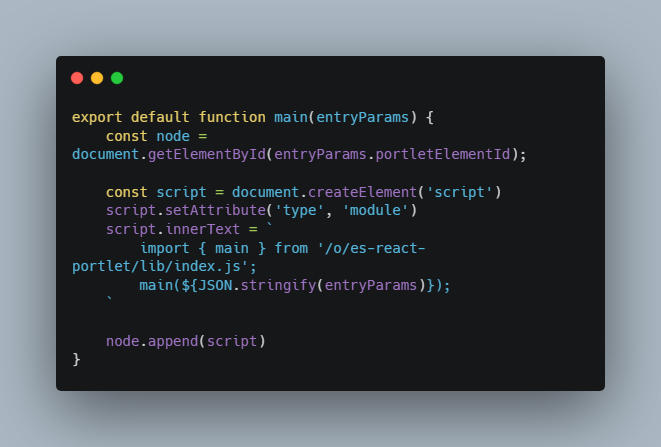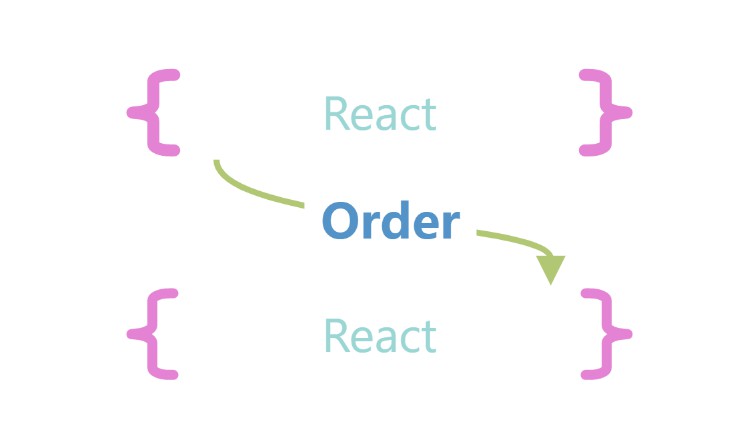LIFERAY ES MODULE PORTLET
Sample repository to show how to use Liferay portlets with es modules.
Goal
Provide packages and components with a portlet and import them on runtime into a portlet. This should increase build time to a minimum because the liferay-npm-bundler doesn’t has to transpile files and only creates a jar file.
Explenation
The concept includes two modules. A provider module and a consumer modules. They are connected in a n to n relation.
Provider Module
A provider module exposes a package or component or basically anything through a portlet and serves the module then through an url.
To make this work, the following steps have to be done.
-
Create an entry which is required for the
liferay-npm-bundler.export default function main () {}
See
es-react-provider/src/entry.jsas an example -
Create an index module which exports all modules which you’d like to provide through this module.
import SampleModule from './modules/SampleModule' import AnotherSampleModule from './modules/AnotherSampleModule' export { SampleModule, AnotherSampleModule }
See
es-react-provider/src/index.tsas an example -
Create two bundle processes which bundle the entry for the
liferay-npm-bundlerand theindex.tsfile.- The entry for the
liferay-npm-bundlerneeds to be placed inside thebuildfolder in thecommonjsformat for liferay to handle it correctly. - The bundled version of the
index.tsneeds to be placed inside theassetsfolder in theesformat, preferably in thelibsubfolder.
See
es-react-provider/rollup.config.jsas an example - The entry for the
-
Define the
liferay-npm-bundlerto- ignore the assets folder
- make the portlet available through a defined url
- create a jar file
See
es-react-provider/.npmbundlerrcas an example
Consumer Module
A consumer module uses the provided es modules from provider modules.
-
Create an entry which includes a
scripthtml tag and imports a file.export default function main(entryParams) { const node = document.getElementById(entryParams.portletElementId); const script = document.createElement('script') script.setAttribute('type', 'module') script.innerText = ` import { main } from '/o/es-react-portlet/lib/index.js'; main(${JSON.stringify(entryParams)}); ` node.append(script) }
See
es-react-portlet/src/entry.tsas an example -
Create an index module, which (in our example) consumes some of the provided modules.
import { SampleModule, AnotherSampleModule } from '/o/es-provider/lib/index.js' export function main (entryParams) { ... }
See
es-react-portlet/src/index.tsxas an example -
Create two bundle processes which bundle the entry for the
liferay-npm-bundlerand theindexfile.- The entry for the
liferay-npm-bundlerneeds to be placed inside thebuildfolder in thecommonjsformat for liferay to handle it correctly. - The bundled version of the
indexneeds to be placed inside theassetsfolder in theesformat, preferably in thelibsubfolder. - The
/o/es-provider/lib/index.jshas to be defined to be an external module, so the bundler doesn’t throws an error on build time.
See
es-react-portlet/rollup.config.jsas an example - The entry for the
-
Define the
liferay-npm-bundlerto- ignore the assets folder
- make the portlet available through a defined url
- create a jar file
See
es-react-portlet/.npmbundlerrcas an example
Example
This workspace contains three modules.
Modules
es-react-provider
Contains and exposes react and react-dom as es modules.
es-react-components
Contains components which can be imported into a portlet.
es-react-portlet
Contains the actual portlet which uses the react and react-dom from the es-react-provider module and includes a sample component from the es-react-components module.
How to run
To run this example, all modules need to be built and deployt onto a liferay instance. After that, everything should work as expected.





